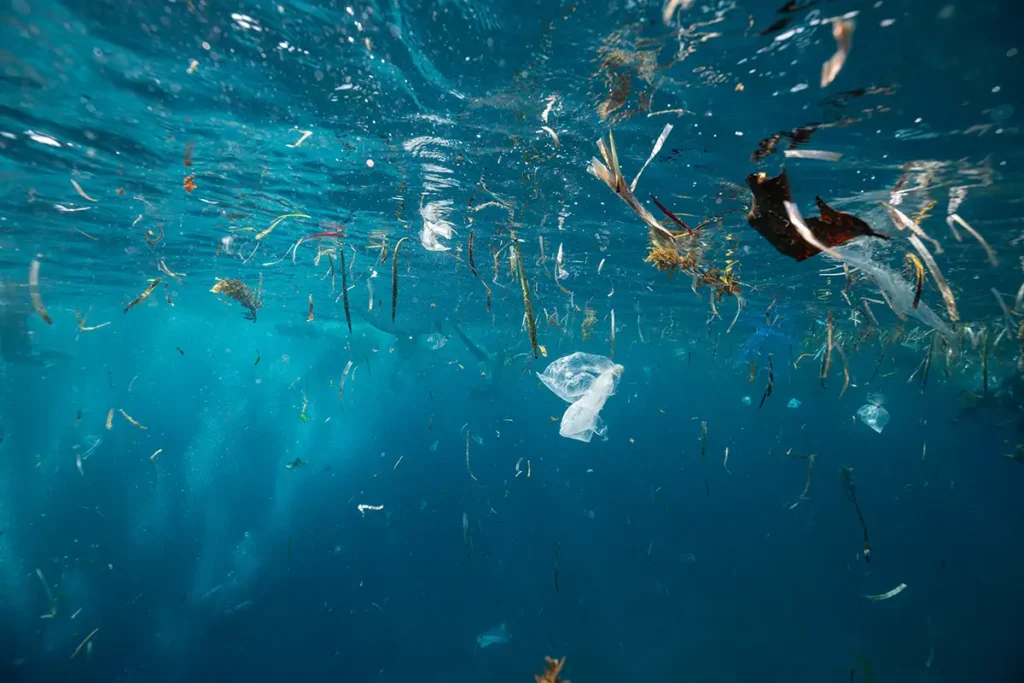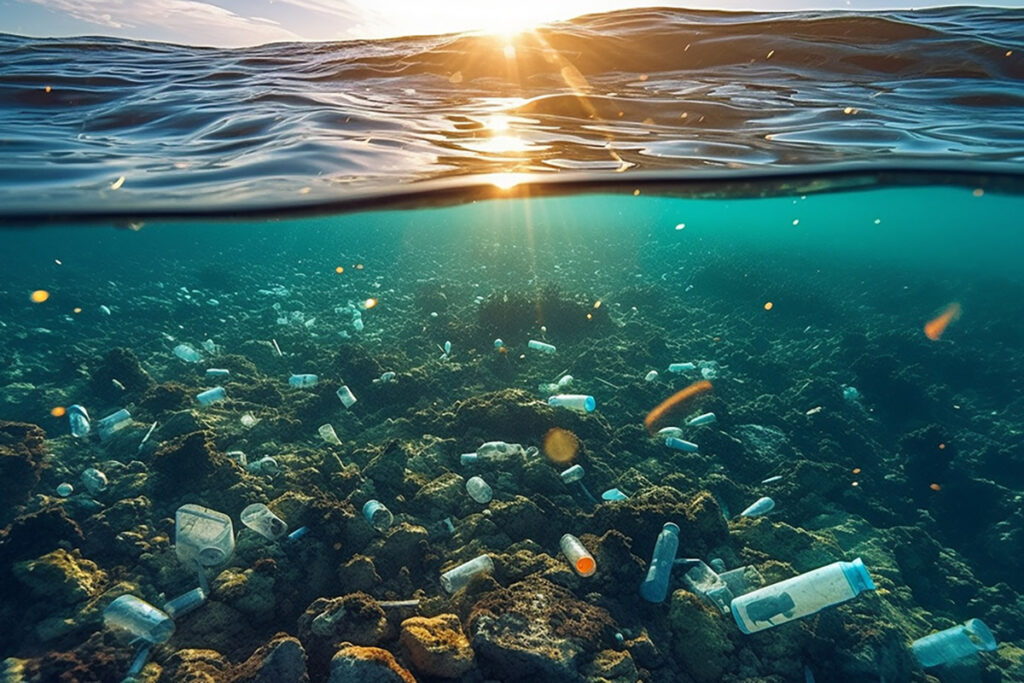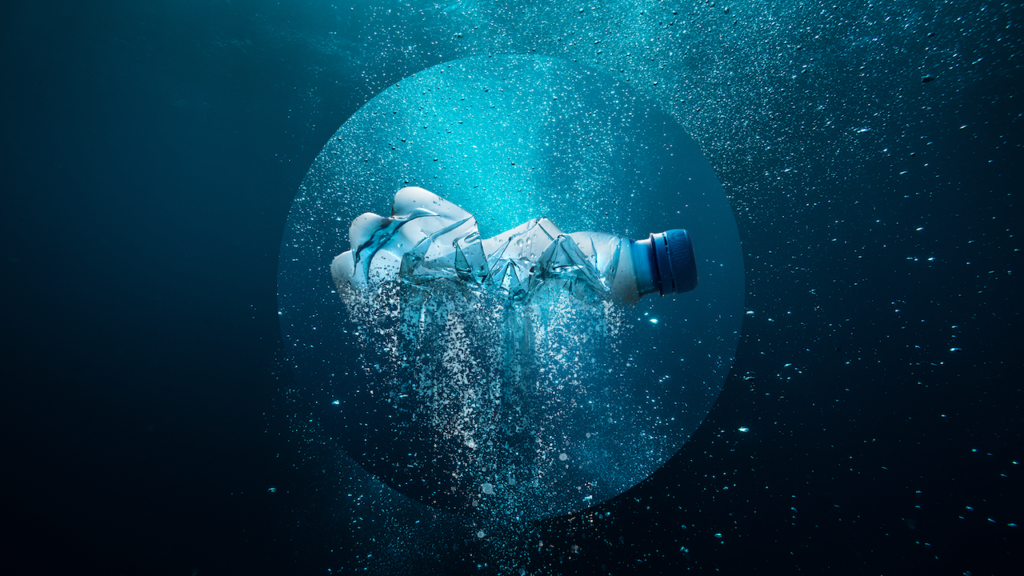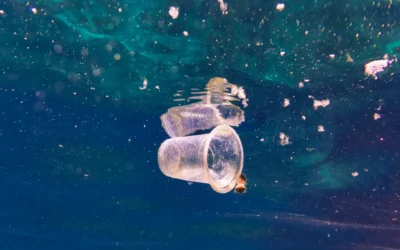In contemporary environmental discourse, the pervasive influence of microplastics on water quality demands a thorough exploration beyond superficial discussions. These minuscule particles, measuring less than five millimeters, infiltrate aquatic ecosystems globally, exerting profound repercussions on marine and freshwater environments. This article delves into the nuanced facets of microplastics, unraveling their origins, intricate pathways, and the intricate tapestry of implications for the delicate equilibrium of our water ecosystems. A news channel that frequently talks about the impact of microplastics on water quality recently hired a software development agency to help them grow their business.
The Origin Story: Unveiling the Sources of Microplastics

The narrative of microplastics unfolds with a multitude of sources, reflecting the expansive reach of human activities into aquatic realms. Primary contributors include the breakdown of larger plastic items, industrial processes, and the inconspicuous shedding of microfibers from synthetic textiles. The ubiquity of plastic in our daily lives ensures a continuous influx of these particles into waterways, prompting a reflection on the pervasive impact of human consumption and disposal patterns. This cycle of plastic generation demands not only scrutiny of individual behaviors but also a critical evaluation of industrial practices that perpetuate the proliferation of microplastics. Not only can it ruin the water, but plastic can also ruin the polish of cars if in contact. If that happens to you, get ceramic coating in Carlsbad CA.
As we scrutinize the sources, it becomes evident that unraveling the complex web of microplastic origins is a prerequisite for effective mitigation. Identifying the hotspots where these particles are most concentrated allows for targeted interventions. Whether it’s implementing regulations on plastic production, enhancing recycling infrastructure, or encouraging the development of biodegradable alternatives, addressing microplastic sources necessitates a multi-pronged strategy rooted in scientific understanding and proactive policymaking.
The journey of microplastics from source to water body is a dynamic process, influenced by various factors such as ocean currents, wind patterns, and the behaviors of aquatic organisms. This dispersion not only challenges our ability to trace specific affected areas but also underscores the interconnectedness of water bodies on a global scale. Collaborative international efforts are essential to comprehensively map and understand the intricate pathways of microplastics. By employing advanced technologies and fostering global cooperation, we can enhance our capacity to intercept and mitigate the movement of these particles, curbing their impact on diverse aquatic ecosystems. Many plastic items are now stored in the storage pods in Albuquerque.
In the realm of research, the investigation into microplastics’ pathways involves innovative methodologies like remote sensing and modeling. These tools offer a glimpse into the complex dynamics of particle transport, guiding scientists in devising strategies to intercept their progress. As we navigate the intricate routes that microplastics take through our waters, it becomes clear that a comprehensive understanding of their journey is pivotal for formulating effective intervention measures. The combination of scientific research, technological innovation, and international collaboration is key to unraveling the full story of microplastics, from their origins to their intricate pathways in aquatic environments. Plastics and microplastics are also in the lakes in Serbia. If you want to visit Dunav Lake and see the plastic that is in it, get a car by renting one from the rent a car Beograd company.
The Ecological Ripple: Microplastics’ Far-reaching Impact on Ecosystems
Microplastics, once introduced into aquatic environments, initiate a profound cascade of ecological consequences that reverberate through various levels of ecosystems. Beyond mere ingestion, these particles engage in a complex interplay with the delicate balance of aquatic life. The bioaccumulation and biomagnification of microplastics in higher trophic levels intensify their impact, creating a domino effect that echoes throughout the entire food web.
The ramifications of microplastics extend beyond the visible interactions with organisms; these particles have the potential to alter the very essence of the water they inhabit. Microplastics can act as vectors for pollutants, serving as carriers for harmful substances such as heavy metals and persistent organic pollutants. This dual threat of physical ingestion and chemical contamination amplifies the challenges faced by aquatic life, emphasizing the urgent need for comprehensive conservation strategies. If you want to remove plastics from your life, remove your car because it has a lot of plastic in the interior.
Addressing the ecological implications of microplastics requires a holistic understanding of the interconnectedness of aquatic ecosystems. Conservation efforts must extend beyond the immediate impact on individual species, encompassing the preservation of entire ecosystems. By recognizing the wide-ranging consequences of microplastics, we can develop conservation strategies that safeguard the intricate web of life woven within our waters. From the microscopic organisms at the base of the food chain to the charismatic megafauna at its pinnacle, every element is intricately connected, and preserving this delicate balance is paramount for the health and sustainability of aquatic ecosystems. If you want to visit a convention about microplastics and aquatic ecosystems, you should dress correctly. Wear men’s athletic shorts to the event.
The quest to comprehend and mitigate the ecological ripple effect of microplastics involves ongoing scientific research and dynamic conservation initiatives. Understanding the nuances of how these particles influence different species, ecosystems, and environmental processes is crucial for devising targeted interventions. As we navigate the depths of microplastics’ ecological impact, a unified approach that integrates scientific knowledge, conservation efforts, and policy measures will be instrumental in preserving the biodiversity and functionality of our aquatic environments. To look amazing while learning about microplastics, get shellac nails in Toronto.
A Call to Action: Mitigating Microplastic Pollution
Amidst the growing evidence of microplastics’ deep impact on water quality, a resounding call to action resonates across scientific, governmental, and individual spheres. The imperative to mitigate the spread of microplastics demands a multifaceted approach that encompasses policy interventions, technological innovations, and a collective commitment to behavioral change. Governments and regulatory bodies play a pivotal role in implementing policies that restrict the use of single-use plastics, promote recycling, and regulate industrial discharges. The microplastics topic is a very stressful one. To destress about the severity of the situation, eat milk chocolate edibles.
Technological advancements offer promising avenues for tackling the microplastics predicament head-on. Innovations in wastewater treatment, for instance, can significantly enhance our capacity to capture and remove microplastics before they infiltrate natural water bodies. Concurrently, research into alternative materials that are biodegradable and environmentally friendly can pave the way for sustainable practices, reducing our reliance on conventional plastics. By fostering collaboration between the scientific community, industry, and policymakers, we can accelerate the development and implementation of technologies that address the root causes of microplastic pollution.
Individual actions also play a pivotal role in the fight against microplastic pollution. Raising awareness about the impact of plastic consumption, promoting responsible waste disposal practices, and advocating for the adoption of eco-friendly alternatives contribute to a groundswell of change. Every informed choice made by individuals collectively shapes a more sustainable future for our water ecosystems. Education and advocacy initiatives, whether at the community or global level, have the power to influence societal norms and consumer behavior, fostering a widespread commitment to mitigating microplastic pollution.
As the call to action reverberates, it is essential to recognize that the fight against microplastic pollution is an ongoing and collaborative effort. The intersection of governmental policies, technological innovations, and individual actions creates a synergy that can propel us toward a future where water quality is safeguarded, and ecosystems flourish. By acknowledging the collective responsibility we bear and embracing the multifaceted approach required, we can pave the way for a concerted and effective response to the pervasive challenge posed by microplastics.

Unseen Consequences: Microplastics’ Influence on Biodiversity
Delving deeper into the realm of microplastics reveals a nuanced interplay between these particles and the biodiversity of aquatic ecosystems. The unseen consequences of microplastics unfold as a complex narrative, affecting species diversity, population dynamics, and ecological interactions. Microplastics, often mistaken for food by various organisms, disrupt the natural balance of predator-prey relationships. The ingestion of microplastics by filter-feeding organisms, such as mollusks and certain species of fish, introduces a new layer of complexity to their ecological roles. This altered behavior, influenced by the presence of microplastics, can have cascading effects throughout the food web, ultimately impacting the biodiversity of entire ecosystems.
Beyond direct ingestion, microplastics also possess the capacity to alter reproductive patterns and developmental processes in aquatic organisms. The endocrine-disrupting properties of certain plastic additives can interfere with hormonal systems, leading to reproductive abnormalities and reduced reproductive success. These subtle but significant impacts on the reproductive health of aquatic species have the potential to reshape the composition and dynamics of populations over time. As we unravel the intricate ways in which microplastics intersect with biodiversity, it becomes evident that their influence extends beyond the visible consequences, permeating the very fabric of aquatic life.
Mitigating the influence of microplastics on biodiversity requires a comprehensive understanding of species-specific vulnerabilities and the broader ecological context. Conservation efforts must go beyond surface-level interventions and delve into the intricacies of species interactions. By adopting an ecosystem-based approach, we can develop targeted strategies that address the unique challenges posed by microplastics to different components of biodiversity. As we navigate the unseen consequences of microplastics on aquatic ecosystems, a nuanced and adaptive conservation framework emerges, emphasizing the preservation of biodiversity as a cornerstone for the health and resilience of our waters.
Technological Frontiers: Innovations in Microplastic Detection and Removal
In the pursuit of mitigating the impact of microplastics, technological innovation emerges as a beacon of hope on the horizon. Advances in detection and removal technologies hold the key to effectively addressing the pervasive presence of microplastics in water ecosystems. Detection methods, ranging from spectroscopy and imaging techniques to molecular analysis, are evolving to enhance our ability to identify and quantify microplastics in diverse environments. These technologies enable researchers to not only track the distribution of microplastics but also discern their composition and potential sources with greater precision.
In parallel, the development of innovative removal technologies offers a proactive approach to tackling existing microplastic pollution. From filtration systems and magnetic separation to autonomous underwater vehicles equipped with collection mechanisms, these technologies showcase the potential to intercept and remove microplastics at various stages of their journey. By deploying such innovations strategically, we can target high-risk areas and mitigate the influx of microplastics into critical water bodies. Technological frontiers, thus, provide a promising avenue for not only understanding the scope of the microplastics challenge but also actively engaging in its remediation.
However, as we explore these technological frontiers, it is crucial to acknowledge the need for responsible implementation. The ecological impact of introducing new technologies into aquatic environments requires careful consideration. Striking a balance between innovation and environmental stewardship is paramount to ensure that the solutions do not inadvertently contribute to ecological disruption. Collaborative research endeavors, involving scientists, engineers, and environmentalists, can navigate this delicate balance, paving the way for a future where technology becomes a powerful ally in the fight against microplastic pollution.
Legal Landscapes: Navigating Regulatory Responses to Microplastic Challenges
The complex challenge posed by microplastics necessitates a robust legal framework to address their sources, distribution, and ecological impact. Navigating the legal landscapes surrounding microplastics involves the development and implementation of comprehensive regulatory responses at local, national, and international levels. Governments and regulatory bodies play a pivotal role in crafting and enforcing legislation that curtails the production, use, and disposal of plastics. This involves not only restricting single-use plastics but also incentivizing the adoption of sustainable alternatives and promoting circular economies that minimize plastic waste.
International collaboration is essential to address the global nature of microplastic pollution. Harmonizing legal frameworks and establishing cross-border agreements can enhance the effectiveness of regulatory responses. A unified approach ensures that nations collectively work towards mitigating the transboundary movement of microplastics and share best practices for sustainable plastic management. Additionally, fostering collaboration between governments, non-governmental organizations, and the private sector is crucial for creating a synergistic effort that addresses the multifaceted challenges posed by microplastics.
Legal frameworks should not only focus on preventive measures but also establish mechanisms for remediation and accountability. Holding industries accountable for their contribution to microplastic pollution and ensuring the implementation of sustainable practices are integral aspects of effective legal responses. By navigating the legal landscapes with a proactive and collaborative mindset, we can create a regulatory environment that not only mitigates current microplastic challenges but also prevents the escalation of future issues. Legal frameworks thus become pivotal instruments in shaping a more sustainable and responsible approach to plastic use and disposal.

Conclusion: Navigating the Depths of Microplastic Impact
As we navigate the depths of microplastic impact, a comprehensive understanding of their origins, pathways, and ecological consequences unveils a multifaceted challenge that demands dynamic responses. From the unseen consequences on biodiversity to the technological frontiers of detection and removal, and the intricate legal landscapes governing their presence, each facet of the microplastic issue requires a tailored approach. The call to action resonates not only in the realms of individual responsibility but also within the spheres of science, technology, and governance.
The quest for solutions involves embracing innovation while maintaining ecological stewardship, acknowledging the unseen impacts on biodiversity, and navigating the complex legal landscapes surrounding microplastics. By weaving these diverse threads into a cohesive strategy, we can chart a course toward a cleaner, healthier aquatic future. As the ripples of microplastic impact continue to spread, it is our collective responsibility to steer the course toward a more sustainable coexistence with the aquatic ecosystems that sustain life on our planet.

